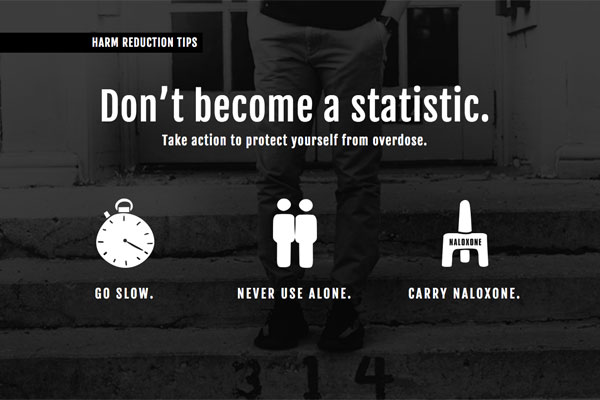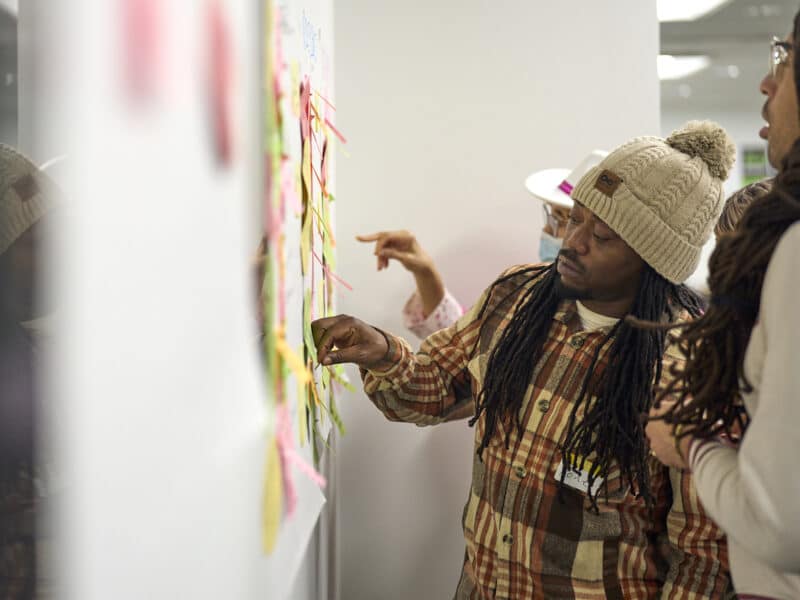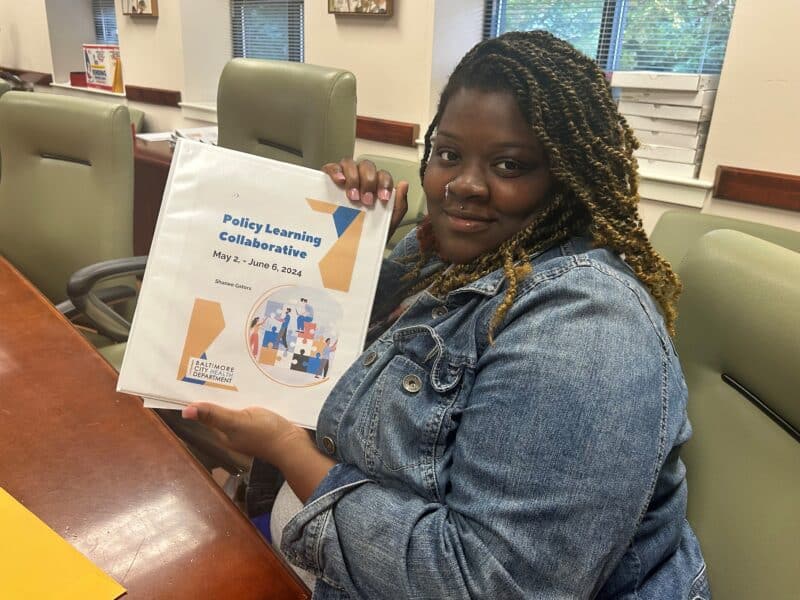The powerful message of “Don’t Drink and Drive” was developed on the assumption that people would consume alcohol, but they should know not to get behind the wheel after. Campaigns to promote condom use are designed to make sure that when people do engage in sex, they take precautions to prevent unintended pregnancy and protect themselves from sexually transmitted infections.
In concert with Bmore POWER, a local group of peer educators and harm reduction advocates, and Mission Media, the Johns Hopkins Center for Communication Programs has developed messages and a new website designed to use the same type of harm-reduction strategies to curb the deadly fentanyl overdose epidemic that is ravaging Baltimore.
“We are not encouraging drug use, but if people are going to use, we want them to use as safely as possible,” says Amber Summers, PhD, a senior program officer who has overseen the effort for CCP.
Two-thirds of the overdose deaths in Baltimore in 2016 were related to fentanyl. In Maryland, fentanyl-related deaths increased from 1,119 in 2016 to 1,594 in 2017. The synthetic opioid is 30 to 50 times more powerful than pure heroin. Just four salt-sized grains of fentanyl can be deadly. It’s also cheaper and relatively easy to get and has infiltrated the Baltimore drug supply.
A series of messages were developed by Bmore POWER, with the help of CCP, during a three-day hackathon earlier this year. The idea was to hear the perspectives of current and former injection-drug users to try to understand just what tactics might resonate with people at risk of overdosing on fentanyl. Fentanyl can be added to heroin without a user knowing it is there.
Over the past several months, messages were honed and the campaign and the “Go Slow” website was the result. The message is three-fold: Go slow. Never use alone. Carry naloxone.
“If you inject heroin or other drugs, going slow could save your life,” the website copy reads. “When you start to inject, use a little bit first and wait 20 seconds to see how strong it is. If it feels off, be careful – consider not using it or taking less. Be sure someone with you has naloxone. If you use heroin, pills or even other drugs in Baltimore there is a good chance you are using fentanyl. Fentanyl has caused a huge spike in overdose deaths. Fentanyl acts FAST. Be careful.”
The recommendation not to use alone is meant to have someone nearby that can administer naloxone and call for help in case of overdose. Having naloxone – a drug that can reverse the effects of an overdose – allows that other person to potentially save your life.
The same messages are being included in printed materials that Bmore POWER hands out when they do street outreach to provide overdose education and distribute naloxone. They also offer to link individuals with drug treatment if they are interested.
The “go slow” message, Summers says, gives people who use drugs a simple guidance that they can follow to reduce the risk of overdose, something they might be more receptive to than a message to abstain from drug use. It was a catchy and actionable phrase that came directly from the hackathon brainstorming.
“This is a behavior that could save a life and it’s something they can actually do themselves,” she says.
For now, the messages aren’t going to be on a billboard or on the radio. It’s more of a grassroots effort to spread the message via stickers, brochures, business cards and conversations that happen on a much more personal level.
“We are meeting people where they are and providing people with something they can use,” Summers says. “If they’re using often, each time we want them to remember this message. We hope it has some impact on making safer choices that could save their life.”





